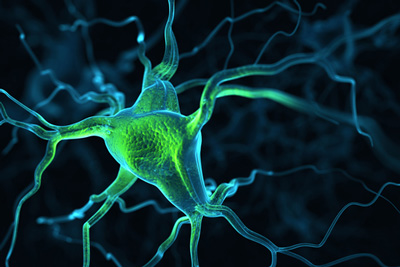RNA-binding proteins play important role in motor neurone disease
Posted: 30 October 2015 | Victoria White
The discovery about the FUS protein could be a major milestone on the path to a treatment for both motor neurone disease and dementia…


Researchers from the University of Toronto have proposed a new way of understanding motor neurone disease (also known as amyotrophic lateral sclerosis (ALS)).
Their findings could be a major milestone on the path to a treatment for both motor neurone disease and dementia.
By delving into a previously overlooked corner of motor neurone disease research, Professor Peter St. George-Hyslop and his team discovered a new way in which the disease kills nerve cells.
Many cases of motor neurone disease are sparked by a toxic build-up of certain proteins, which cause neurons in the brain and spinal cord to die. Paralysis and suffocation result, meaning that few people live more than five years with a motor neurone disease diagnosis. Over the last decade, mutations that cause motor neurone disease have been found in a growing number of genes that encode RNA-binding proteins. The protein they create commonly builds up inside the diseased brain and spinal cords in patients with motor neurone disease. Until now, scientists haven’t thought this build-up was important to the disease process because it looked different from the types of protein accumulations – such as tau, amyloid and alpha synuclein – that are clearly toxic and always found in patients with Alzheimer’s, Parkinson’s and some forms of dementia.
Several years ago, St. George-Hyslop decided to take a closer look at these seemingly innocuous protein accumulations. Working with Tanz researcher Tetsuro Murakami and with colleagues at the University of Cambridge and Columbia University, they focused initially on the FUS protein, and discovered that these abnormal clumps could actually be a very important player in causing nerve cell damage and motor neurone disease.
Mutations in FUS change the property of FUS protein so that it forms dense gels
The FUS protein normally plays a key role in the healthy functioning of neurons, which transmit nerve signals in the brain and spinal cord. However, FUS and other proteins in its RNA-binding class seem to operate differently from many other cellular proteins. St. George-Hyslop’s team showed that FUS protein has the very unusual ability to morph from a liquid to a gel. The gel form of FUS allows it to collect other cellular components that are necessary to make new proteins, and delivers them in a compact, concentrated form to the outer edges of the neurons. After reaching its destination, the gel melts into liquid, releasing the cellular components and allowing protein synthesis to occur. Its ability to repeatedly cycle between liquid and gel, allows FUS to rapidly and discreetly control protein synthesis in specific parts of the cell. This ability is key to keeping big cells like spinal cord neurons in a healthy state.
The research team found that mutations in FUS changed the property of FUS protein so that it tends to form very dense gels that do not easily re-melt and release their cargo appropriately. As a result, it’s unable to deliver the tools necessary for the neurons to stay healthy and do their job.
“This kills the nerve by throttling it and preventing it from making new protein in the parts of the cell that desperately need it,” says St. George-Hyslop. “The mutations force the gelling process to go further than it should have gone.”
The next step is for researchers to find ways to prevent the solidification of the gel, or to reverse the hardening process, offering a key to a future drug to treat motor neurone disease and frontotemporal dementia – another disease in which the protein is active.
The discovery has implications for other, more common forms of motor neurone disease that have accumulations of other over-gelled RNA binding proteins.
Related conditions
Amyotrophic Lateral Sclerosis (ALS), Dementia
Related organisations
Toronto University



